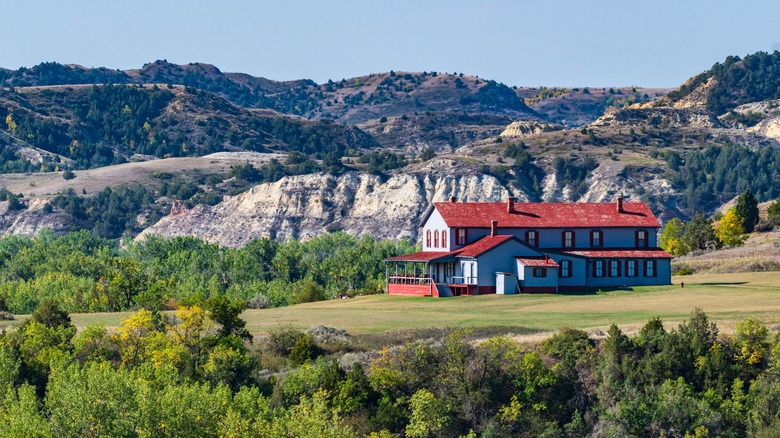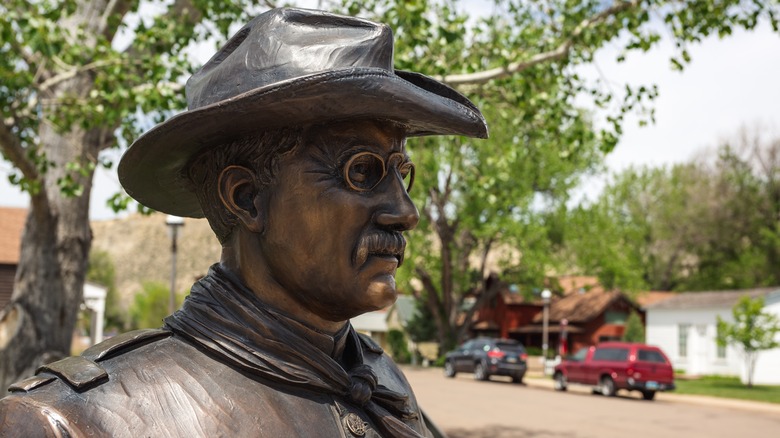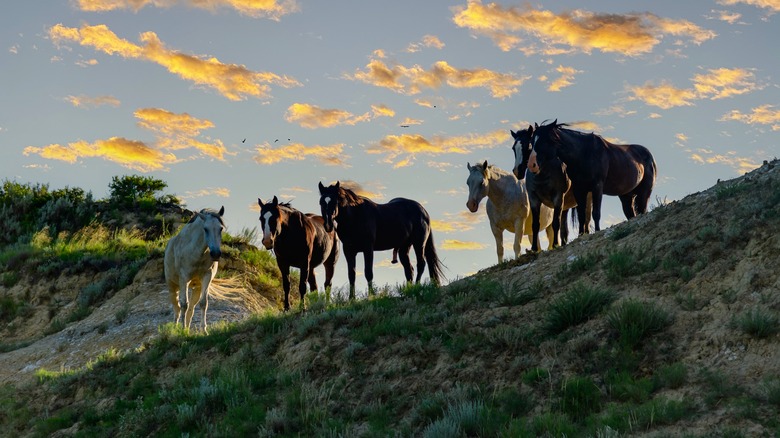A Gateway Town To North Dakota's Only National Park Has It All From Local Shops To Unspoiled Nature
North Dakota is one of those states that flies well below the radar, so much so that if you ask most people what it's famous for, they're likely to draw a blank. South Dakota, on the other hand, is known for iconic sites like Mount Rushmore and the Crazy Horse Memorial. It's also got amazing sunrises and sunsets at Badlands National Park and a hidden paradise for wine lovers in the Black Hills. Poor North Dakota is the ever-neglected sibling, always lingering in the shadow of her more showy sister.
However, it's a mistake to ignore North Dakota. This low-key Midwestern state — made up mainly of prairie, ranches, rolling hills, sleepy towns, and wheat farms — has a lot to see and do for anyone curious enough to do a bit of on-the-ground exploration. It's the 19th-largest state in the country, but with less than 10 people per square mile, it ranks 47th in population density. This translates into open land in its natural form, which is reason enough to check it out.
Situated on the shores of the Little Missouri River, the tiny town of Medora makes a great stop off for anyone interested in getting to know North Dakota's hidden splendors. With just 151 full-time residents, this little gem makes up for in charm for what it lacks in size. Plus, it's a perfect jumping-off point for the Theodore Roosevelt National Park, one of the nation's most underrated nature reserves.
A taste of the Wild West in the Badlands
Medora was founded in 1883 by a French nobleman named Antoine de Vallombrosa, the Marquis de Mores. The town was named in honor of his wife. When his local business ventures failed, the Marquis packed his bags and moved back to France. However, future president Theodore Roosevelt — who had gone to Medora to hunt buffalo — fell in love with the area so much that he founded two ranches, which helped establish the region as cattle country.
Roosevelt's presence can be felt all over modern Medora. Two statues of him grace the town, including one that will stand in front of the not-yet-completed Theodore Roosevelt Presidential Library. His involvement in its history is notably celebrated in "Medora Musical," a Country Western stage extravaganza seen by over four million people. Performed at the Burning Hills Amphitheater — a large outdoor venue just a mile outside of town — the family-friendly show is one of Medora's biggest tourist draws, featuring variety acts such as jugglers, comedians, and magicians.
Medora itself may be small, but it still has plenty of other things happening. Visit the Center of Western Heritage & Cultures, where the North Dakota Cowboy Hall of Fame pays tribute to the rough-and-tumble cattle drivers who have worked and still work ranches throughout the state. Also, see the Chateau de Mores, a 26-room home built by the French Marquis who founded Medora, which is now a museum that honors de Vallombrosa's life and activities in the area. For a round of golf, hit the Bully Pulpit Golf Course, an set of links with an awe-inspiring Badlands backdrop.
Experience sweeping visits in a surreal landscape
Theodore Roosevelt's experience in North Dakota was life-changing. It was where he first fell in love with the great outdoors, leading him to establish the United States Forest Service in 1901, which immediately protected some 230 million acres of land. Theodore Roosevelt National Park honors this legacy with over 70,000 acres of Badlands. It is one of the best U.S. national parks to visit to admire wildlife.
The park's boundaries come right up to the edge of town. Inside the park visitors are treated to wide vistas of wind-eroded bluffs, canyons, and rock formations, as well as the gentle flow of the Little Missouri River. The park is also home to wildlife, including a herd of 300 bison, feral horses, elk, coyotes, prairie dogs, and more. It's also a great place for birding, with at least 185 species to spot, such as golden eagles, wild turkeys, and great horned owls.
Many people explore the park from the comfort of their cars via a 36-mile scenic drive past many of its best features. There are also plenty of hiking trails to explore and campgrounds where visitors can sleep under the impossibly wide Dakota sky.


